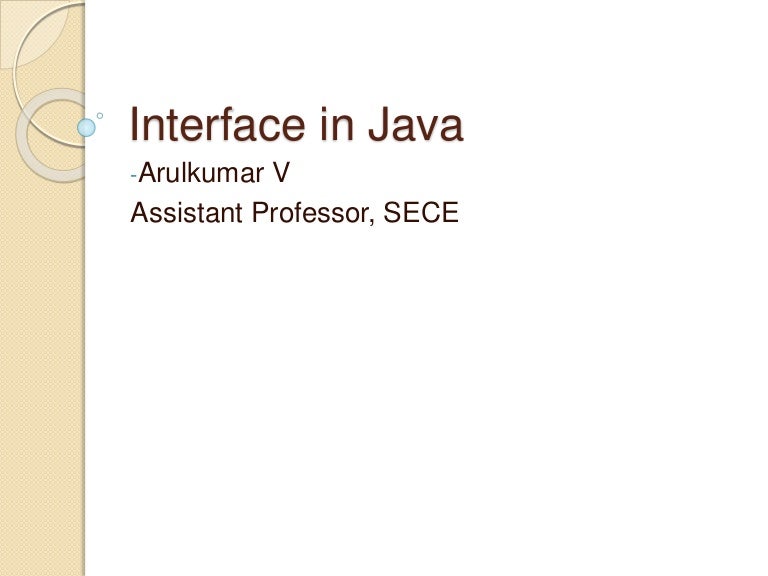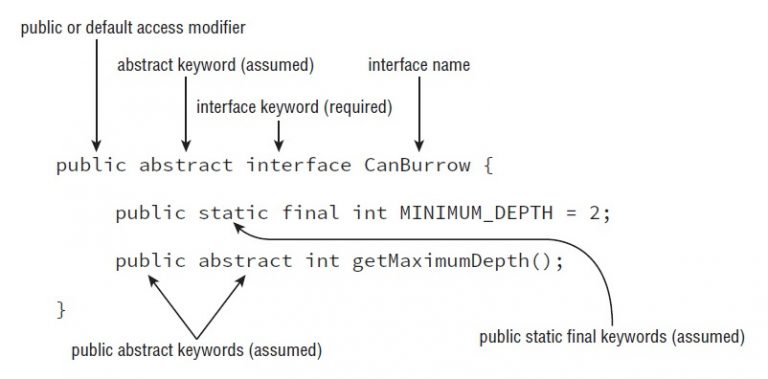

The Syntax of a java generic interface is as follows: interface interface-Name 3. Java generic interfaces do not contain any constructors or instance variables. The reference can only be created to other interfaces and not to objects, Unlike class. It helps in achieving multiple inheritances as well through a hierarchy.Ī java generic interface only includes the abstract methods and only has static and final variables.
#JAVA INTERFACE RULES CODE#
It offers various benefits like shorter and more efficient code that is also significantly faster. What differentiates Java Generic Interfaces from other interfaces is that it also deals with abstract data types. It can be used to declare a variable and can be returned from a method. A non-generic class can be used if a specific parameterized type is provided with the generic interface.Ī Java generic interface is very much like any other interface. The generic class can have other parameterized type parameters. The implementing class MUST also be generic.

The interface is written in a file with a.java extension, just as classes. A class that implements an interface must provide an implementation for every interface method, or be an abstract.

A class that implements the interface is required toĪn interface can have as many methods as necessary, just like a class. Interfaces make compiler enforced contracts. An interface's public, static, and final properties are all set to their default values, and its methods all have an empty body. The interface keyword is used to declare an interface. In this technique, Loose Coupling is archived and all methods and classes are completely independent. Therefore, while using an interface, we define the method and signature independently. You can achieve (full) abstraction via interfaces.Ĭoupling: The phrase coupling refers to how one class depends on another. Signature and prototype are known to the user. Since all of the interface's methods are abstract, just the method It another way, the user will know what the object does rather than how it does it. Multiple Inheritance: Java does not provide multiple inheritance, however you can achieve multiple inheritance using interfaces.Ībstraction: Abstraction is the process of shielding the user from the implementation specifics in order to merely supply them with the functionality. You can declare how the methods and fields of a given type should An interface may also have constants, static methods, nested interfaces,Ĭommunication: One of the functions of the interface is to facilitate communication. An interface is implemented by a class in order to inherit abstract methods. That only contains the method declaration. In a similar vein, the Java Interface is also an Abstract Class Java Abstraction offers a method's functionality by concealing the implementation logic contained within the method.

It transfers information-which could be signals, commands, or protocols-between system components. Java interface makes things easier to read and less complicated, which reduces code complexity.Ĭomputer interface is referred to be a line dividing two or more systems. The Java Programming Language's Java Interface is an advanced level of abstraction. Improved, and a completely new level of data abstraction is achieved. Code readability and project speed are enormously
#JAVA INTERFACE RULES HOW TO#
Ever questioned how to use an interface in Java? The interface is the pinnacle of Java's Object-Oriented Programming.


 0 kommentar(er)
0 kommentar(er)
